Cacio e Pepe Pasta (Authentic Recipe from Lazio, Italy)
Cacio e pepe pasta is a recipe that will you the ability to make a classic Italian dish that will transport you to Italy without leaving your own home.
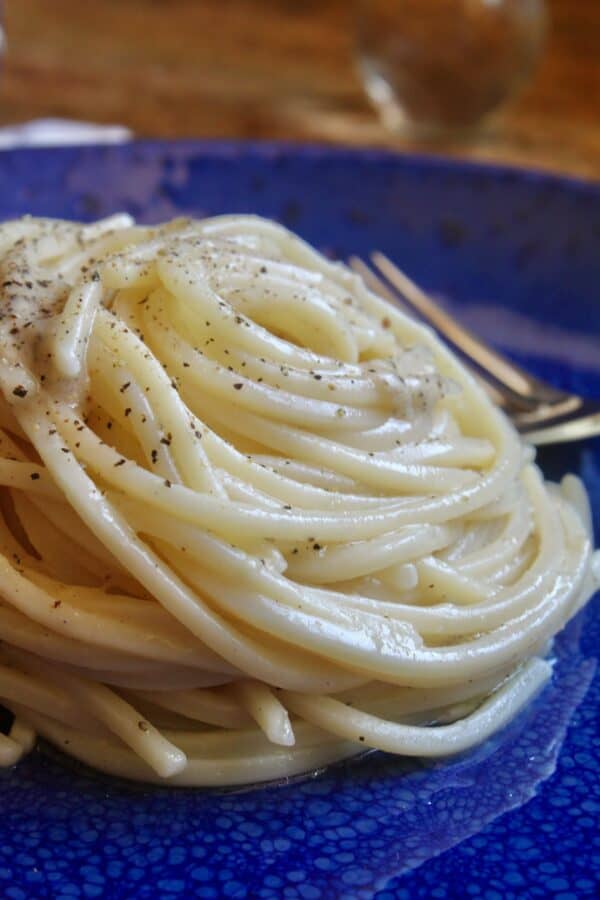
Originally published November 24, 2014
As you can see, I originally published this cacio e pepe pasta recipe almost 10 years ago.
As an Amazon Associate I earn from qualifying purchases. Disclosure: my family and I were hosted for lunch by Loreto at Casa Lawrence. As always, all opinions are my own.
NOTE: I will be having Sunday lunch at Casa Lawrence when I go back to Italy next month, so follow me on Instagram to see all the gorgeous, home cooked food we’ll be served at this fantastic agriturismo!
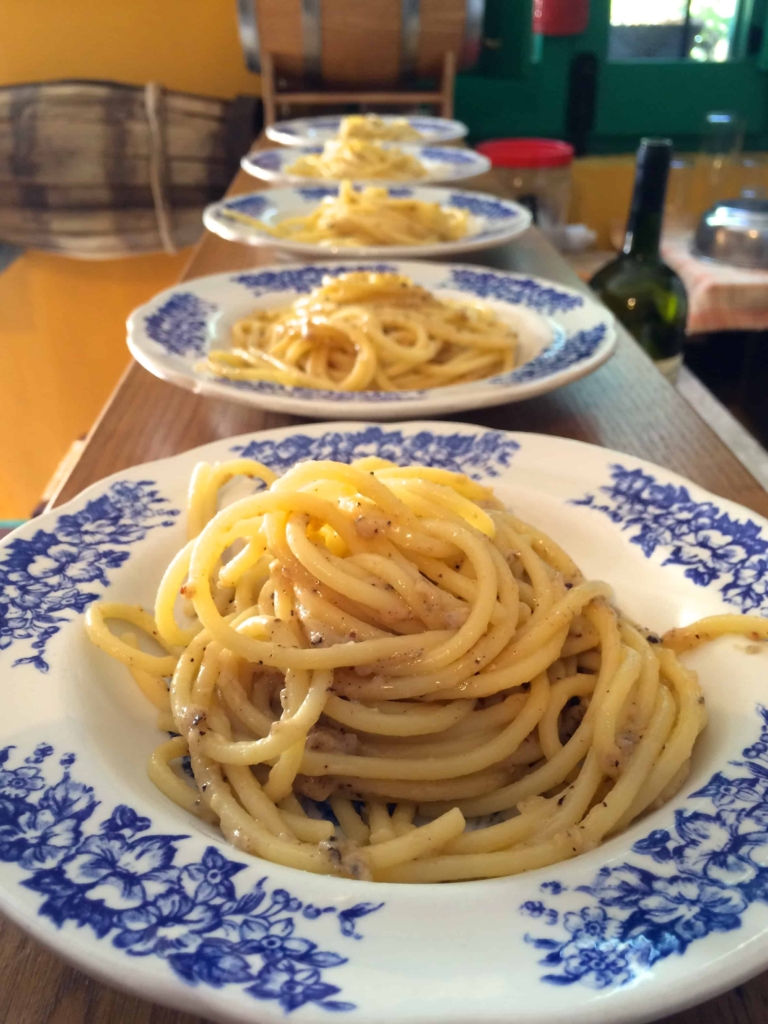
It was because of a visit to La Caciosteria di Casa Lawrence where the owner, Loreto Pacitti, gave me an impromptu cacio e pepe pasta making lesson. I shared the recipe here, however, it was intertwined with a travel post about visiting the agriturismo in Picinisco, Italy, so I think I confused Google.

Meanwhile, cacio e pepe pasta became the “new” buzz in the American and British pasta world, and everyone and their brother were sharing recipes, all too often, incorrectly. I’ve seen horrific versions of this recipe shared online (with all sorts of crazy ingredients), so I’m republishing this authentic recipe from a cheesemaker in Lazio so that you can use, and make this phenomenal dish the way it’s made to be prepared.
I had this amazing cacio e pepe with dandelion version in Rome, too!
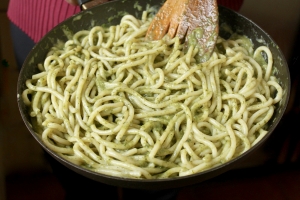
NB: I have read that there are feuds over this pasta recipe. One issue is that some claim that there should be nothing else added to the pasta except for cheese and pepper; meaning no oil and no pasta water. I don’t want to enter into the debate, however, I will say that you really cannot get more authentic than Loreto’s recipe. His family has been farming and making cheese in Picinisco for generations! Not to mention that the pasta was incredibly delicious and I wouldn’t want to make it any other way!
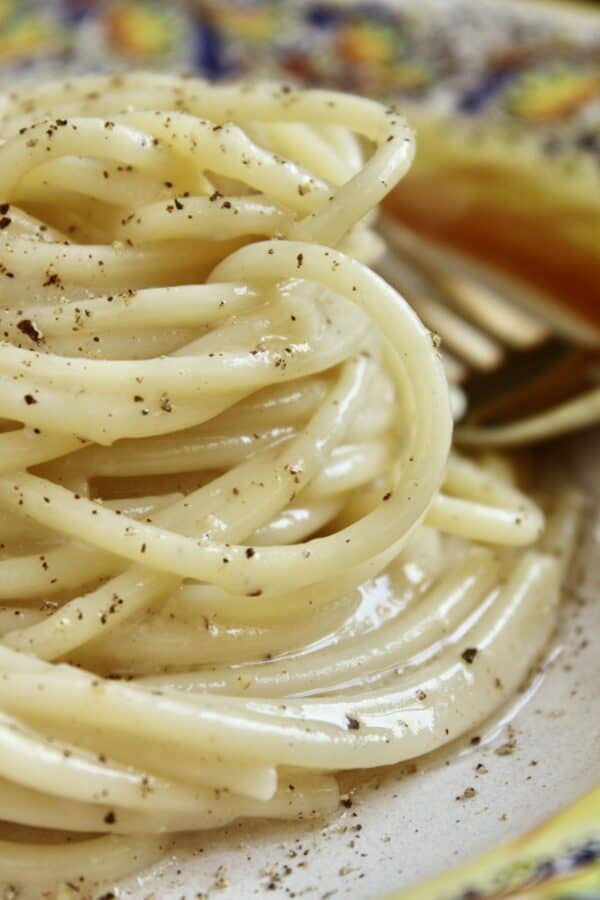
This is what transpired after we had lunch at Casa Lawrence.
Loreto asked if I wanted to cook a quick cacio e pepe pasta, and I just couldn’t resist! I had actually never made cacio e pepe pasta, probably because my mother and Nonna never did.
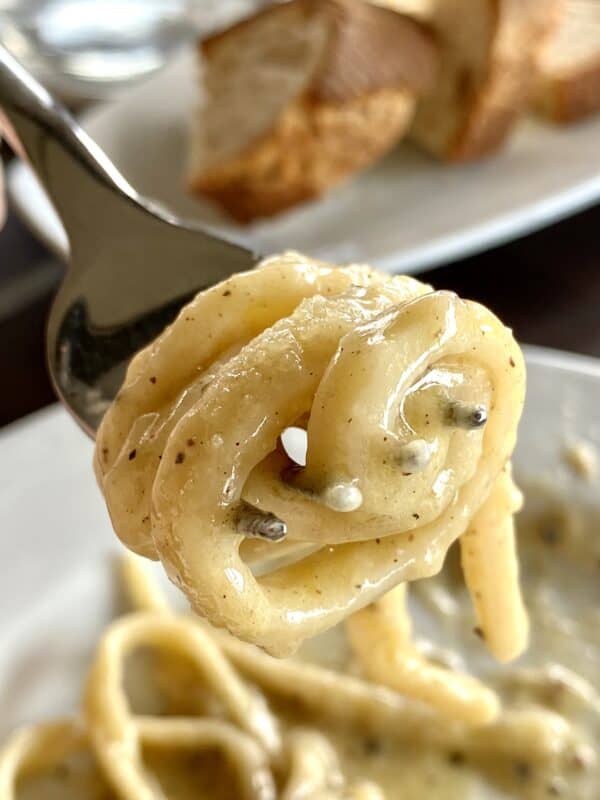
Now I’m wondering why, since it is a dish that originated in their area, just like spaghetti alla carbonara.
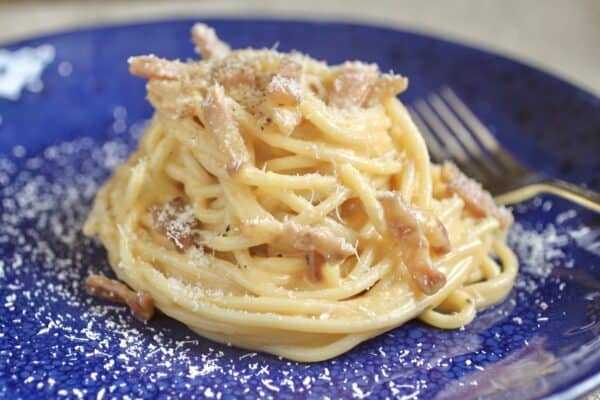
What is Cacio e Pepe Pasta?
“Cacio” means cheese and “pepe” means pepper, so with Loreto’s Pecorino di Picinisco D.O.P. (his own cheese) I could only imagine how fabulous this pasta would taste. We went back into the kitchen and I grabbed an apron which just happened to be the one which said, “La Cacioste”, which translates to a female cheese maker–perfect!
Let’s get to the authentic cacio e pepe pasta recipe, then I’ll tell you more about Casa Lawrence. FYI, this is not the kitchen used for the restaurant. Printable recipe is at the bottom of the post.
Please watch the short video, but remember, I’m not a professional filmmaker by any means!
Click to watch Loreto making
Authentic Italian Cacio e Pepe Pasta!

If at first you don’t succeed, don’t give up! Although it’s a super simple pasta recipe, it can be tricky to get a creamy sauce without clumping, but I do believe practice makes perfect!
What to serve with Cacio e Pepe
There are no side dishes or any other dishes that are appropriate to serve with cacio e pepe pasta. I wrote an entire post about the fact that the internet is rife with misinformation on this topic. Pasta is its own course and should never be served with a side, or as a side dish.
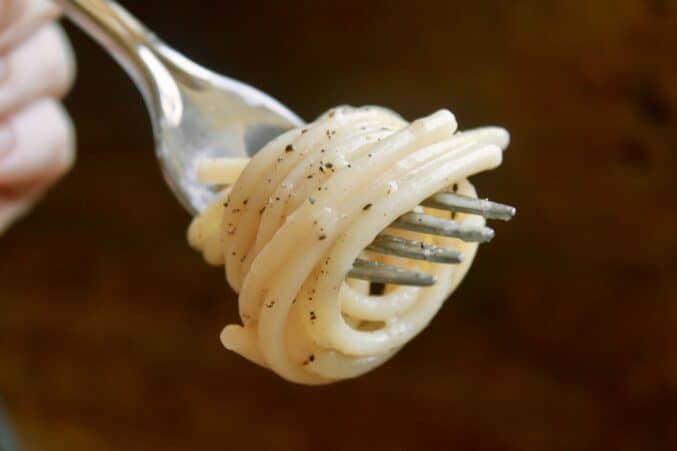
Authentic Cacio e Pepe Pasta Recipe
(Cheese and Black Pepper Pasta)
recipe by Loreto Pacitti, Casa Lawrence
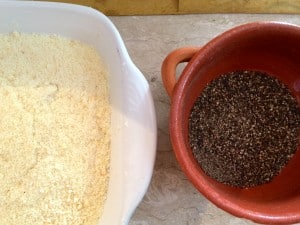
Ingredients
- good quality spaghetti note: Loreto used bucatini, as he didn’t have spaghetti on hand
- extra virgin olive oil
- pecorino cheese (a Pecorino that is D.O.P. is preferred, but use the best quality you can find!)
- black pepper, to taste (Loreto used Rimbàs pepper. In the US we can buy Sarawak pepper which is the same.)
- sea salt or Kosher salt (Diamond brand)
Step by Step Directions for Cacio e Pepe Pasta
Mix the cheese and ground pepper together and set aside. Loreto didn’t put a lot of pepper, maybe 1 1/2 tsp as he said those who like more can add it to their plates afterwards.
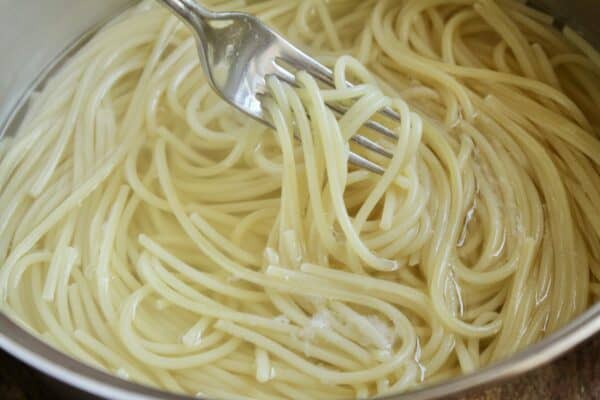
Cook the pasta in boiling, salted water (use less water than usual, as one of the important parts of this dish is the starch, which is needed for the sauce to form correctly) until al dente.
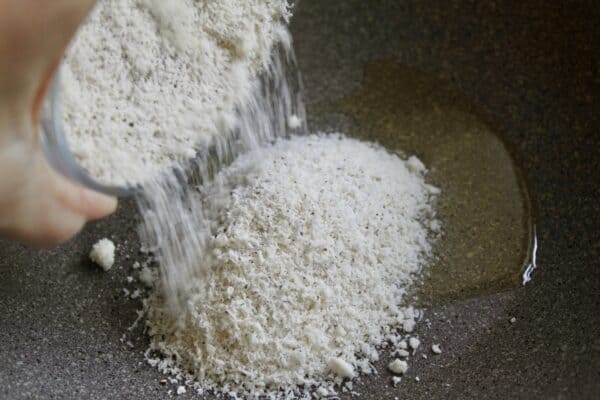
Put the extra virgin olive oil and a small amount of the pasta water into a non-stick skillet, without turning on the burner. Add the grated cheese and pepper, and begin stirring in the pasta, off the heat.
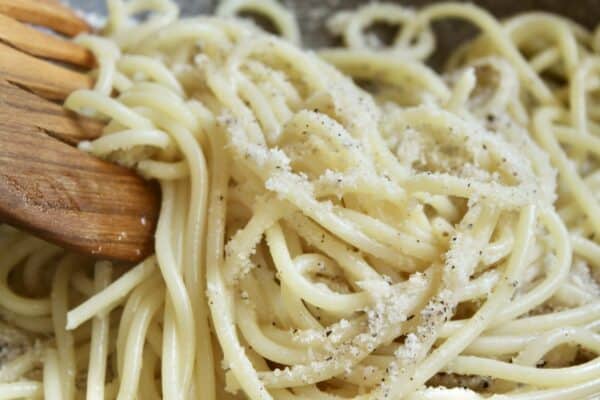
Loreto says it’s very important not to use heat when stirring in the cheese and pepper. If heat is used, you will end up with clumps of cheese on the pasta. (See the video link above.)
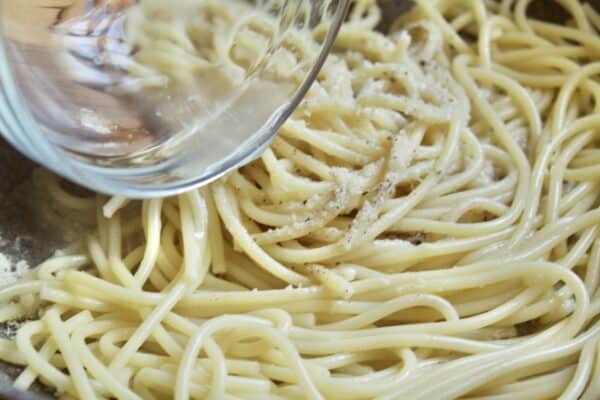
Continue to add water as necessary until a sauce begins to form on the pasta. Loreto says that sometimes the simplest dishes are the most difficult. If this step is not done correctly, the sauce won’t turn out as it should.
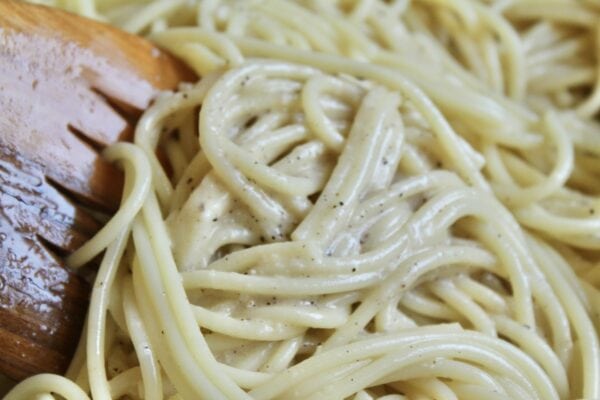
Serve immediately.
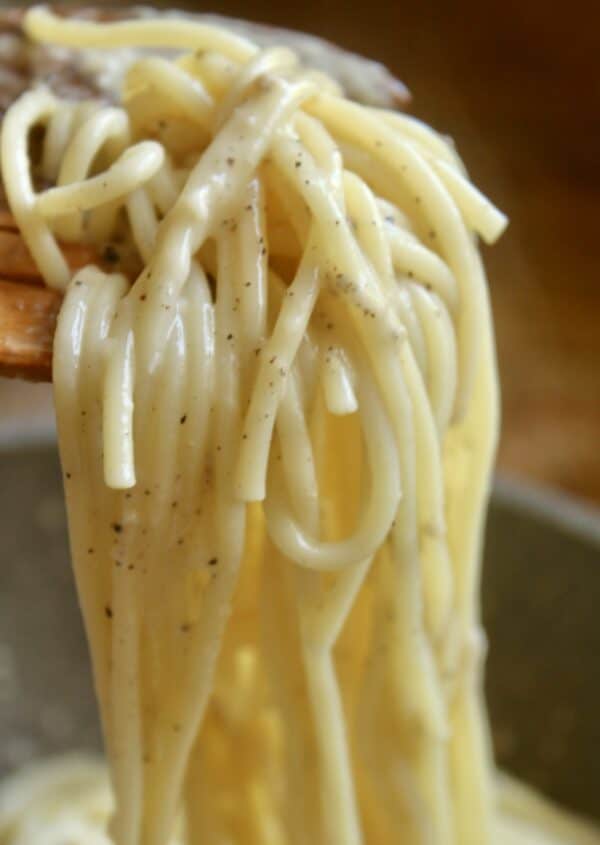
Look at that creamy sauce!
Once Loreto served up all the pasta, which included two plates for a lovely English couple named Angela and Les, who happened to be driving through the area. Apparently, a lady at their bank that morning had told them they just had to go to Picinisco as it was so gorgeous! Loreto invited them to sample his pasta.
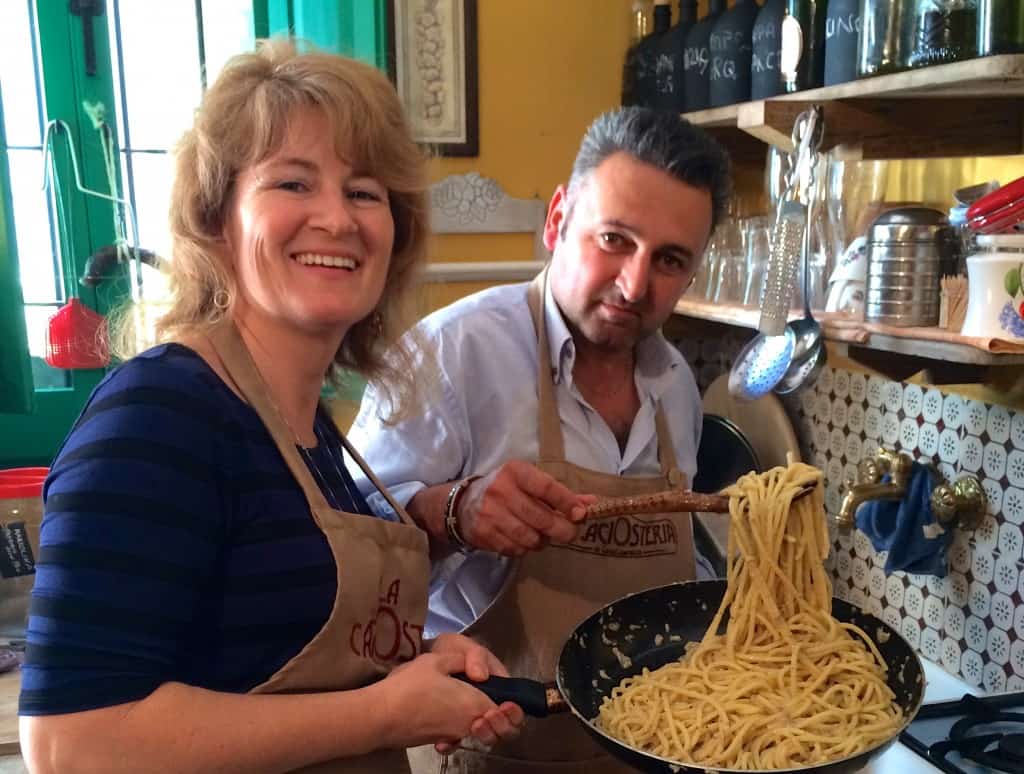
They were so welcomed, and enjoyed the time they spent with us that they promised they’d book reservations to come back on Sunday (lucky them). The conversation you hear in the background of the video is my mother talking to Angela and Les–haha! You can tell this was a spur of the moment video production.
Gianfranco was done with photos and videos and wanted to eat! However, this time besides “the face”, I also got hands-on-the-hips action!
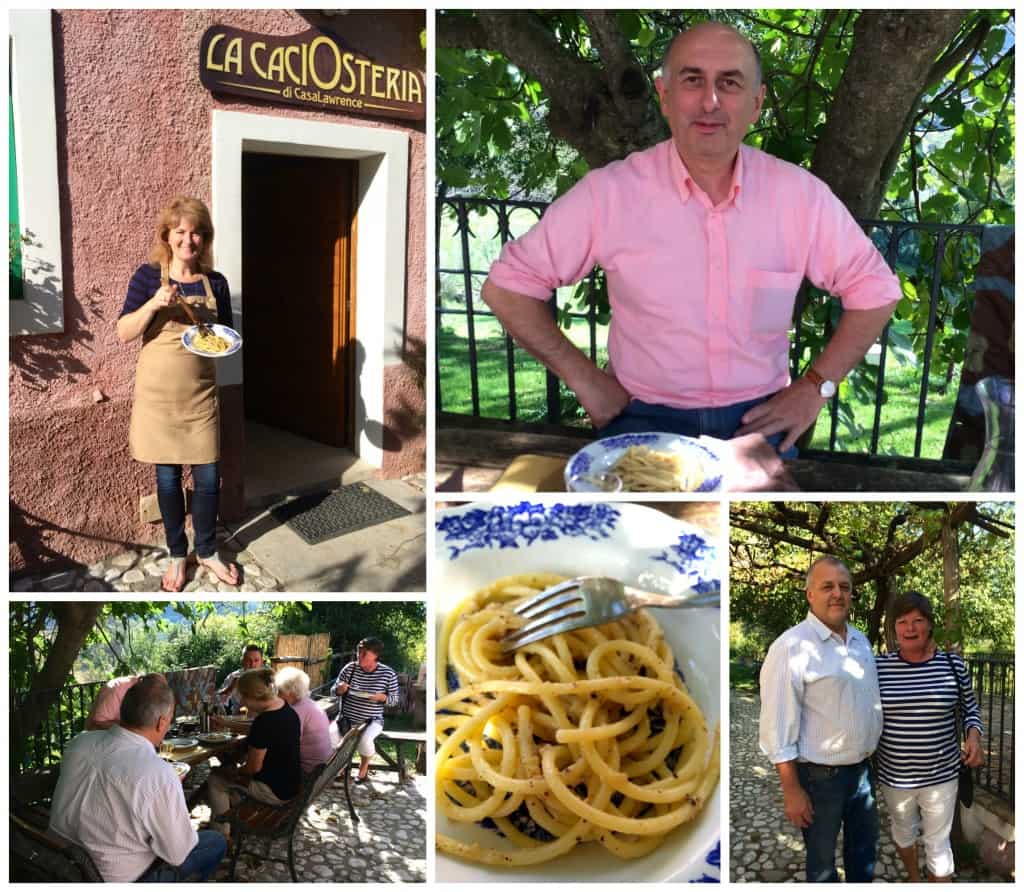
The pasta was phenomenal, given the combination of flavors from the piquant cheese and the spicy black pepper. It’s definitely something I’m going to be putting on my regular dinner rotation at home. Unfortunately, I won’t have Loreto’s Pecorino di Picinisco D.O.P. or Rimbàs black pepper. (EDIT: I learned that Sarawak black pepper is the same thing!)
If you think that was it for our lunch, you’d once again be mistaken. Loreto went inside and carried out a lovely crostata di fighi (fig tart). He also brought out some homemade Nocino (hazelnut liqueur). He then went to pick some grapes and another fruit I’ve never even seen before.

Corbezzelo is the name of the red berry-type fruit, but in dialect Loreto said it was called, “m’briachella” inferring that eating too many of them will make you drunk! I think that might just be an old wives’ tale, but who knows, I didn’t eat enough of them to know for sure! I did like the flavor and texture of the sweet fruit, which is called a strawberry tree in English, but it was definitely different than any other fruit I’ve tasted.
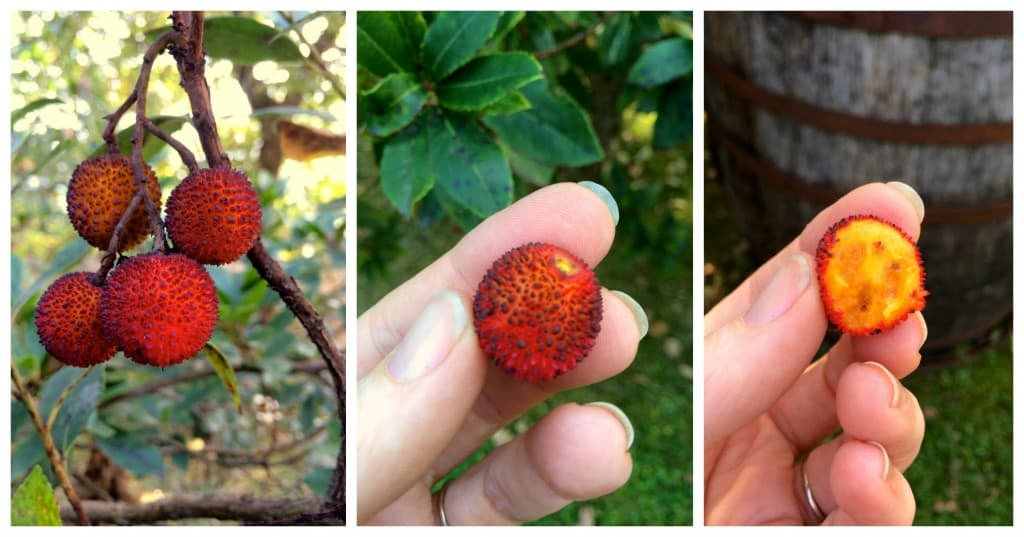
Here’s my first post so you can read about La Caciosteria and the tour of Casa Lawrence house. And if you’re on Instagram, you can follow Loreto on his Casa Lawrence account.
I hope that if you are ever in Lazio, especially if you are in Frosinone, that you will be able to visit Casa Lawrence. I’m sure I don’t need to say anymore about the food there, the areas nearby are just as phenomenal, and it’s not far from Rome, Naples, Pompeii, beach cities and mountain towns in the area.
Booking.com
And as promised, here is a picture of my very first plate of cacio e pepe pasta made here in LA, with many more to follow.
Don’t miss another recipe or travel post; sign up for my free subscription.
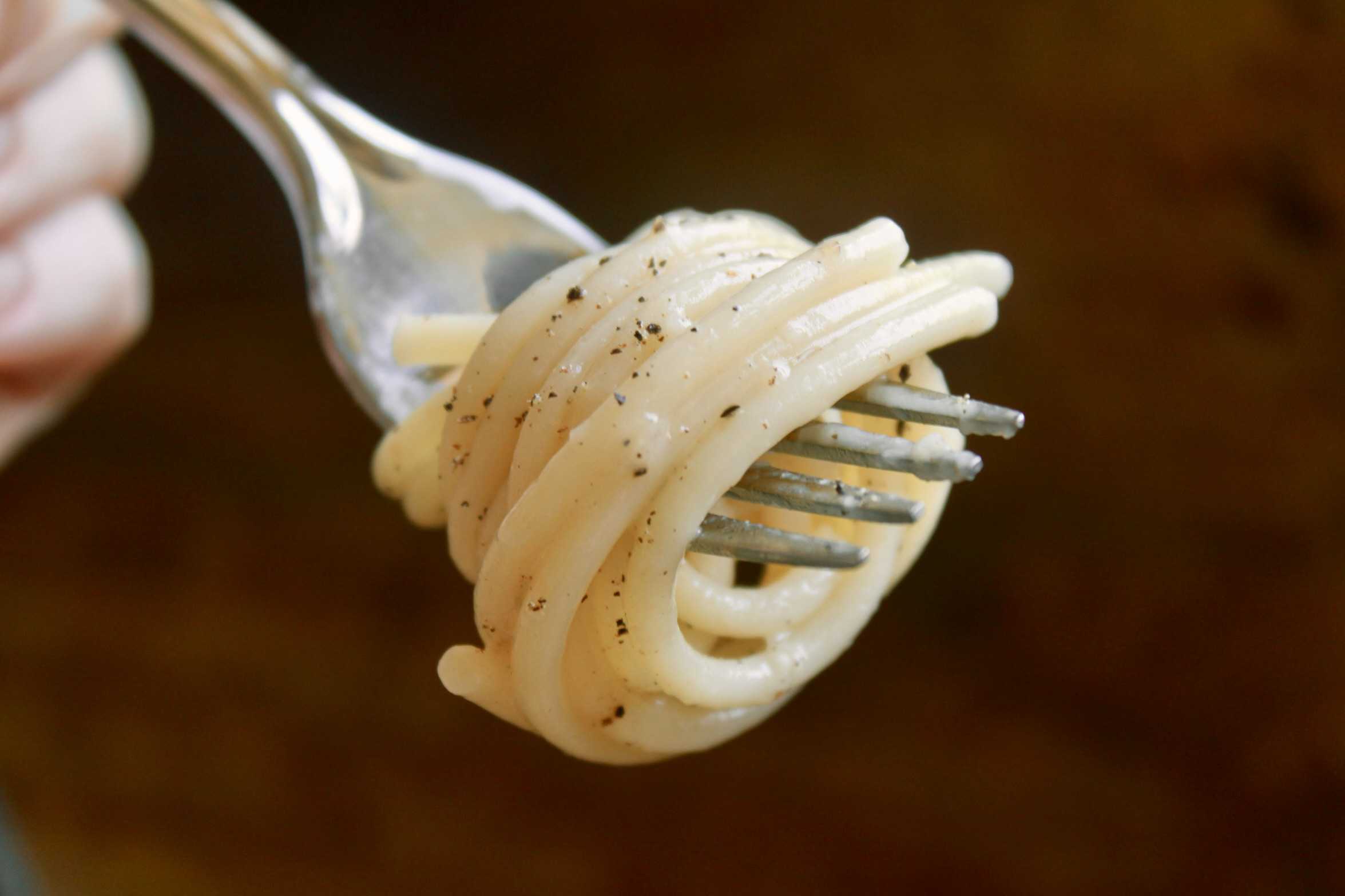
Casa Lawrence and a Recipe for Spaghetti Cacio e Pepe (Spaghetti with Pecorino Cheese and Black Pepper)
Ingredients
- 1 lb spaghetti (Italian)
- 1 Tbsp extra virgin olive oil
- 1 ½ cups to 2 cups pecorino cheese grated
- 1 tsp to 2 Tbsp black pepper freshly ground, to taste
- ⅛ tsp sea salt
Instructions
- Mix the cheese and ground pepper together and set aside. Loreto didn’t put a lot of pepper, maybe 1 ½ tsp as he said those who like more can add it to their plates afterwards.
- Cook the pasta in boiling, salted water (use less water than usual, as one of the important parts of this dish is the starch, which is needed for the sauce to form correctly) until al dente.
- Put the extra virgin olive oil and a small amount of the pasta water into a non-stick skillet, without turning on the burner. Add the grated cheese and pepper, and begin stirring the pasta, off the heat. Loreto says it’s very important not to use heat when stirring in the cheese and pepper or else you will end up with clumps of cheese on the pasta.
- Continue to add water as necessary until a sauce begins to form on the pasta. Loreto says that sometimes the simplest dishes are the most difficult, and if this is not done correctly (for example, stirring in the cheese and pepper over heat), the sauce won’t turn out as it should. Serve immediately.
Notes
- Be sure to follow all of the detailed instructions for best results.
Nutrition
Disclosure: I received lunch for four at La Caciosteria di Casa Lawrence at no charge. All opinions are my own, and I only recommend products and services that would I use myself. I am disclosing this in compliance with FTC regulations.Christina’s Cucina is a participant in the Amazon Services LLC Associates Program, an affiliate advertising program designed to provide a means for sites to earn advertising fees by advertising and linking to Amazon.com.


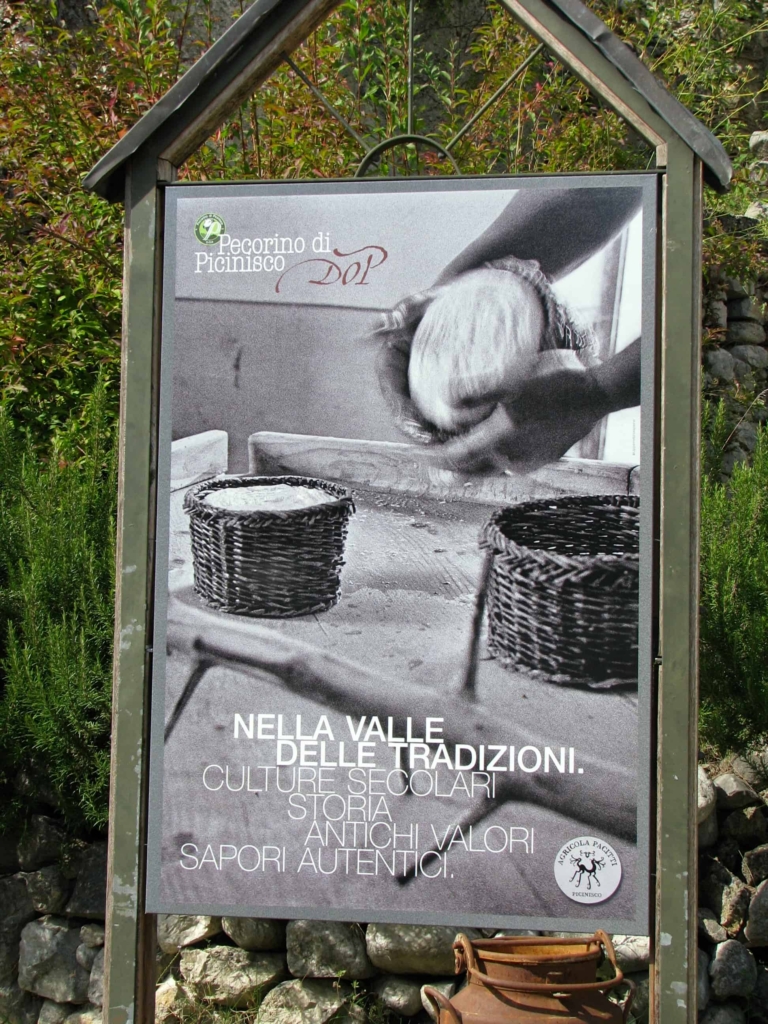
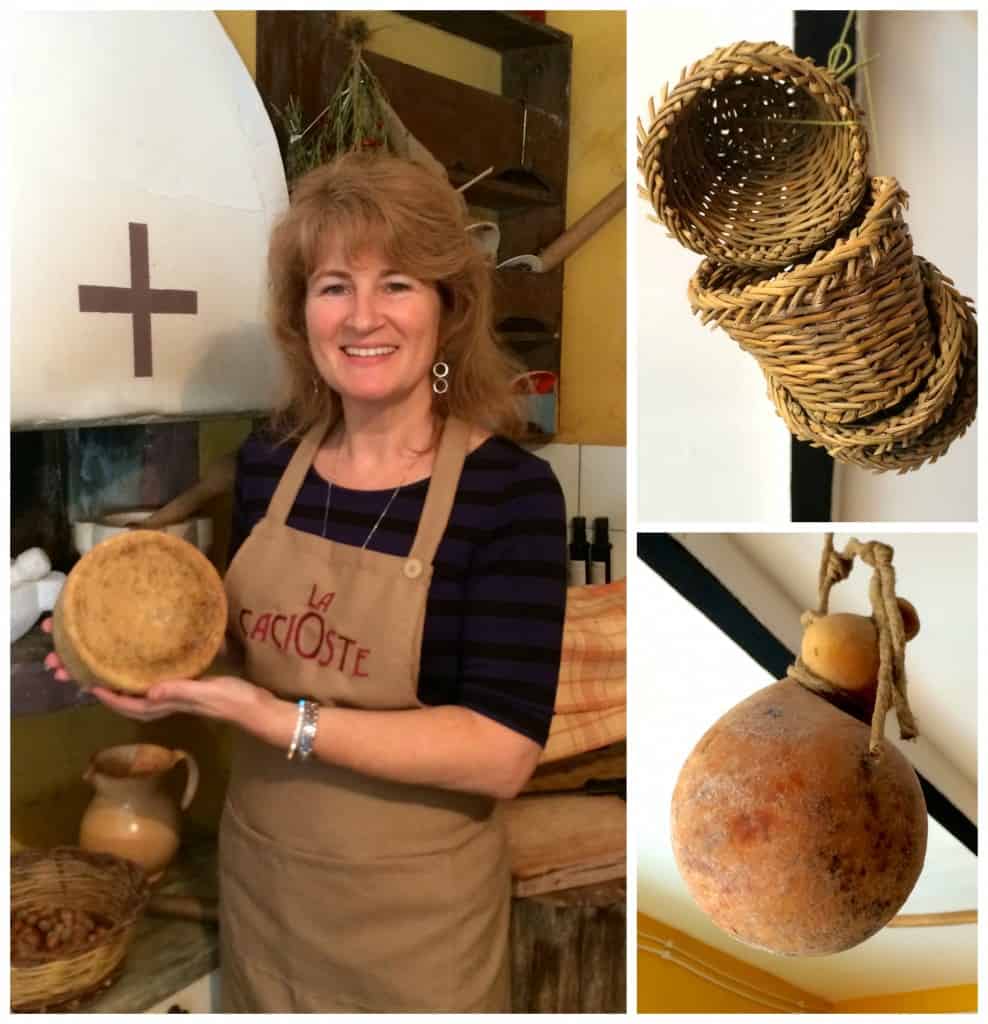
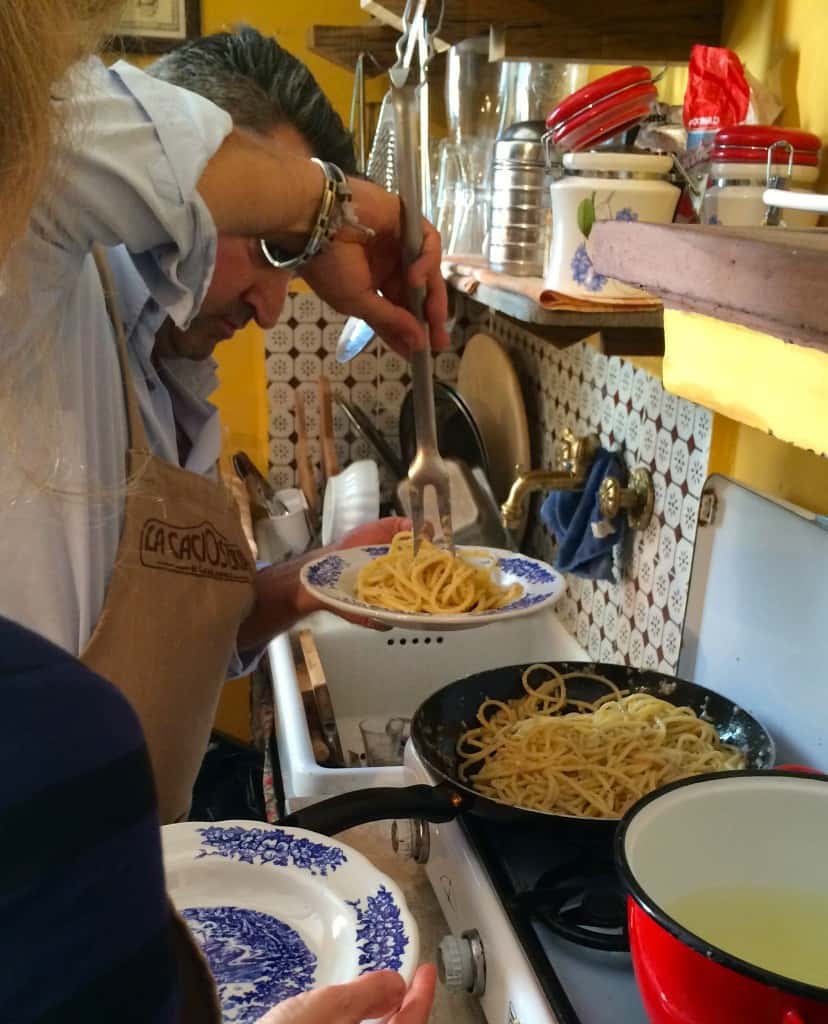
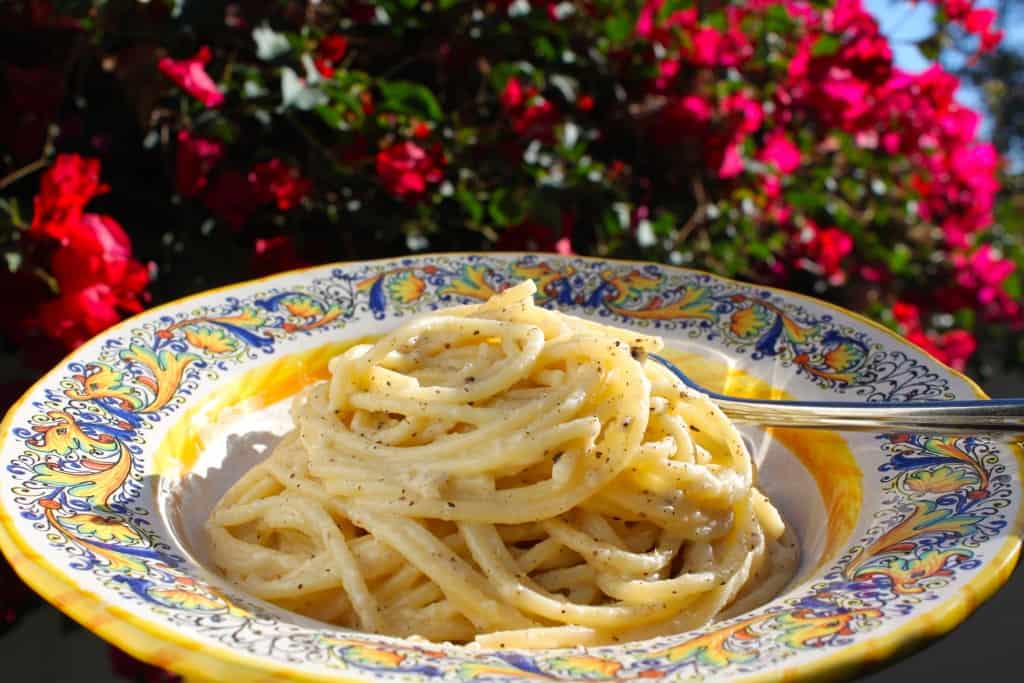
MOKA COFFEE POT coffee and Cacio e Pepe ….a combination so appealing. We had Cacio e Pepe in Italy on a cruise…we went to a small local restaurant for real food accompanied by many harbor workers on an afternoon meal break. The waitress said the kitchen had run low but the chef would make us Cacio e Pepe.. it was the best meal we had had on the whole cruise. Thank you for the recipe, the video, and resparked memories. Sandra